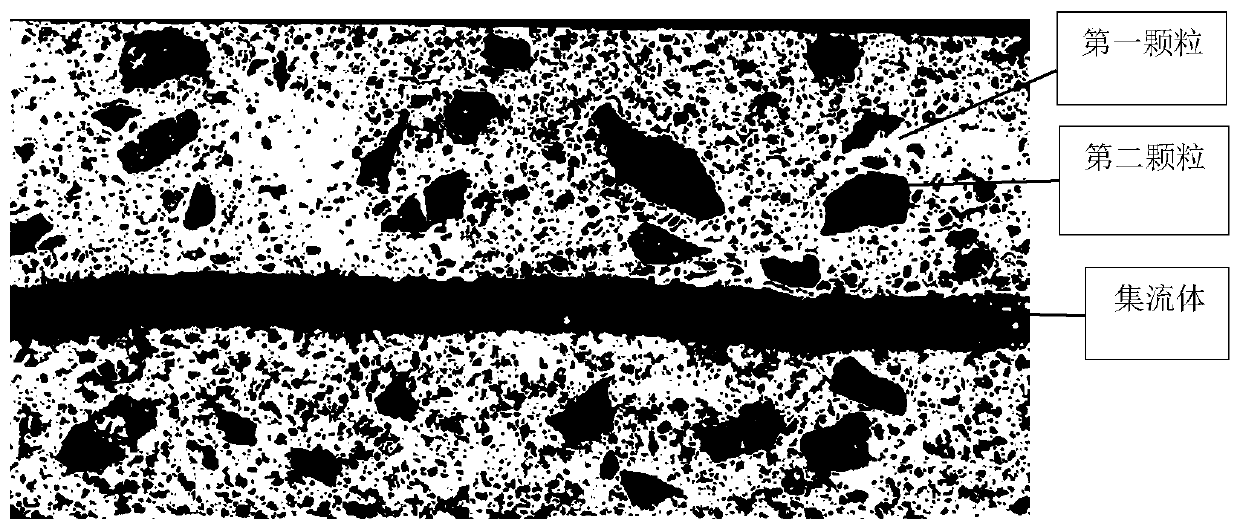Electrolyte and electrochemical device
An electrochemical and electrolyte technology, applied in the field of energy storage, can solve problems such as poor storage performance and high film resistance of lithium-ion batteries
- Summary
- Abstract
- Description
- Claims
- Application Information
AI Technical Summary
Problems solved by technology
Method used
Image
Examples
preparation example Construction
[0104] The negative electrode can be prepared by a preparation method known in the art. For example, the negative electrode may be obtained by mixing an active material, a conductive material, and a binder in a solvent to prepare an active material composition, and coating the active material composition on a current collector.
[0105] Separator
[0106] In some embodiments, the electrochemical device of the present application is provided with a separator between the positive electrode and the negative electrode to prevent short circuit. The material and shape of the separator used in the electrochemical device of the present application are not particularly limited, and it can be any technology disclosed in the prior art. In some embodiments, the separator includes a polymer or an inorganic material formed of a material stable to the electrolyte of the present application.
[0107] For example, a separator may include a substrate layer and a surface treatment layer. The ...
Embodiment 19
[0128] The positive pole of embodiment 19:
[0129] The preparation method of the positive electrode is similar to that of Example 4, only the positive electrode active material is not exactly the same and the area ratio of nickel-cobalt lithium manganese oxide and lithium manganate is different, and the area ratio is different by controlling the quality of nickel-cobalt lithium manganate and lithium manganate ratio, and the particle size of nickel-cobalt lithium manganese oxide and lithium manganate particles, as long as the technical solution can be realized.
[0130] The positive electrodes of Example 20 to Example 55 and Comparative Example 4 to Comparative Example 5
[0131] The preparation method of the positive electrode is exactly the same as in Example 18.
[0132] (3) Preparation of electrolyte
[0133] In an argon atmosphere glove box, ethylene carbonate (EC), ethyl methyl carbonate (EMC), and diethyl carbonate (DEC) were mixed according to a mass ratio of EC:EMC:...
Embodiment 1
[0172] The X-ray photoelectron spectroscopy test result of the positive electrode active material layer of embodiment 1 is as follows figure 1 Shown, the XPS spectrum of the positive electrode active material layer of embodiment 1 has a peak at 164 to 175eV, and the XPS spectrum of the positive electrode active material layer of comparative example 3 has no peak at 164 to 175eV (that is, its XPS spectrum shows at 164 to 175eV place baseline).
[0173] As shown in Table 2, similar to Example 1, the XPS spectra of the positive electrode active material layers of Examples 2 to 9 and Comparative Examples 1 to 2 have peaks at 164 to 175 eV.
[0174] The inventors found that the peaks at 164 to 175 eV in the XPS spectra of the positive electrode active material layers of Examples 1 to 9 may be caused by the addition of additive A in the electrolyte.
[0175] In addition, from the comparison of Examples 1 to 9 and Comparative Examples 1 to 2, it can be seen that when the amount of e...
PUM
| Property | Measurement | Unit |
|---|---|---|
| Grayscale | aaaaa | aaaaa |
| Grayscale | aaaaa | aaaaa |
Abstract
Description
Claims
Application Information
 Login to View More
Login to View More - R&D
- Intellectual Property
- Life Sciences
- Materials
- Tech Scout
- Unparalleled Data Quality
- Higher Quality Content
- 60% Fewer Hallucinations
Browse by: Latest US Patents, China's latest patents, Technical Efficacy Thesaurus, Application Domain, Technology Topic, Popular Technical Reports.
© 2025 PatSnap. All rights reserved.Legal|Privacy policy|Modern Slavery Act Transparency Statement|Sitemap|About US| Contact US: help@patsnap.com



